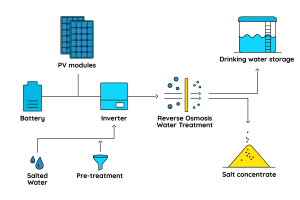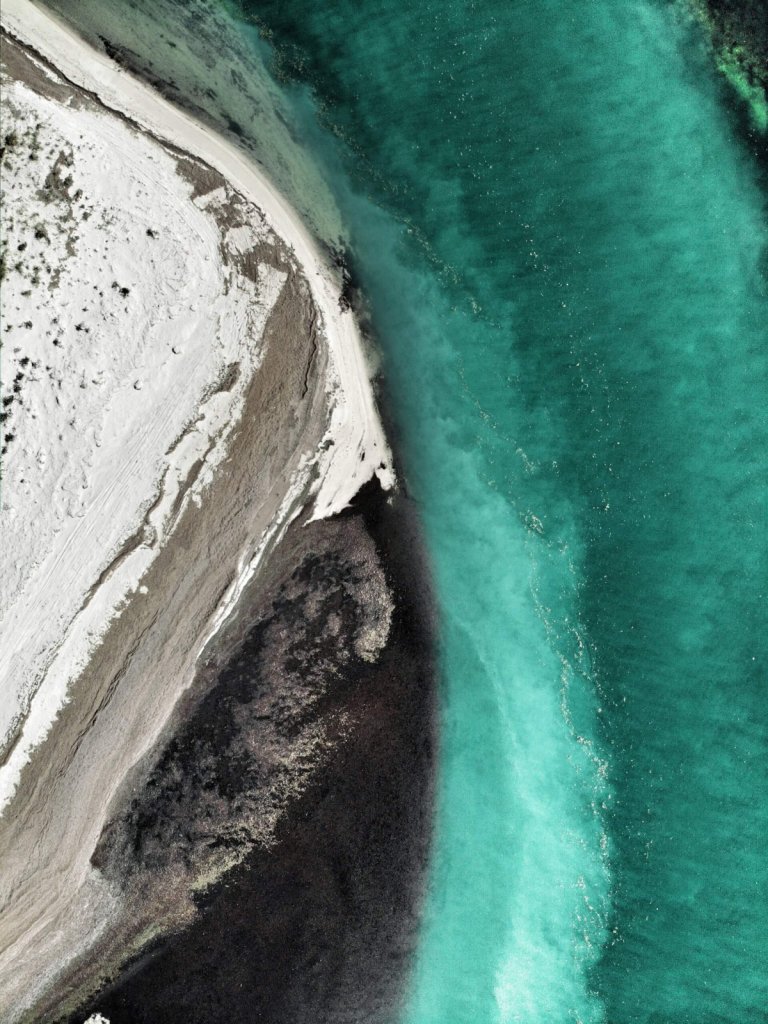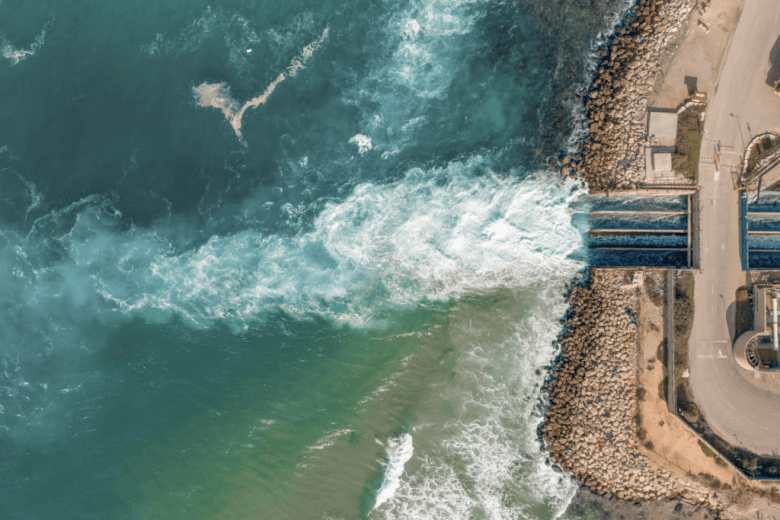Water desalination through PV systems: The sustainable solution to water shortages
As we all know, water scarcity has become a major problem in many parts of Central Europe. This situation has made people inventive, especially in regions with hot climates and access to the sea. In this blog, you’ll learn how PV can play a key role in innovating how to desalinate water.
Tunisia is a country affected by water scarcity, especially in its coastal regions and in the Sahara Desert. In 2021, only about 450 cubic metres of fresh water was estimated to be available per inhabitant. By comparison, Germany has an average of 2,292 cubic metres per capita per year. Given climate change and the increasing demand for water due to population growth and economic development, the situation will continue to worsen. The average water supply per person in Tunisia is expected to fall to less than 350 cubic metres by 2030.
Seawater – salt = drinking water
To meet this challenge, Tunisia is increasingly relying on seawater desalination using reverse osmosis. This technology allows salt water from the sea to be converted into drinking water. Seawater desalination is a promising solution for Tunisia to meet the growing water needs of its population and agriculture. Historically, Tunisia has relied on fossil fuels to power desalination plants, which is not only expensive but also harmful to the environment. Switching to PV systems for water desalination is therefore not only a more cost-effective, but also a more sustainable, zero-emission option that will reduce Tunisia’s carbon footprint.
A photovoltaic-powered reverse osmosis system uses solar energy to desalinate salt water. As can be seen in the illustration, the installation consists of a photovoltaic system and a reverse osmosis system that desalinates the water.
The desalination process starts with the seawater being fed into a pre-treatment tank and then treated. This removes unwanted particles and impurities. The treated water is then pumped at high pressure through a semi-permeable membrane, which retains the salt and other impurities. The purified water can then be made available for use, for example, as drinking water or for agricultural purposes. The concentrate stream containing the retained salts and impurities is disposed of as a waste product.

PV-powered reverse osmosis system for water desalination
Why is PV power used to desalinate water?
Tunisia is a country that is still heavily dependent on imported fossil fuels. However, as Tunisia is quite solar energy rich, with over 3,000 hours of sunshine per year, it makes sense to reduce dependence on these imports by using the PV-powered reverse osmosis system. So not only does PV offer sustainability, but it also offers a plus in terms of energy independence.
But that is not all. PV-powered desalination plants have the advantage over conventional fossil-fuel desalination plants of requiring less land, as they do not require large infrastructure such as power plants or pipelines. This makes them well suited to site-specific applications and can be used effectively even in remote areas.
In addition to this, the creation of jobs and the development of local supply chains also play a role here. The installation, maintenance and operation of PV systems requires technical skills in engineering, electrical and mechanical engineering, which creates the requirement of targeted training of the local workforce. Also, the regional labour market has to work towards the production of system components.
EAnother factor that plays a key role in regional development: Job opportunities.
Water desalination: reference projects in Tunisia
There are already several PV-based water desalination projects in Tunisia. One example is the desalination plant in the arid desert region of Ben Guerdane in the province of Medenine in south-eastern Tunisia. The plant was financed by the Tunisian government in partnership with the European Investment Bank, the European Union and the Japanese government. The desalination plant is equipped with a 210 kilowatt (kW) PV system and provides 1,800 cubic metres of drinking water to the local population.

In May 2018, a seawater desalination plant was also put into operation on the island of Djerba as a solution to the water shortage. Djerba is one of Tunisia’s main tourist attractions and the demand for water has increased steadily in recent years. The plant desalinises up to 50,000 cubic metres of seawater per day to meet the needs of the population, including tourists. In the south of Tunisia, near the city of Gabès, another plant with a capacity of 36,200 cubic metres per day is under construction.
Conclusion
The use of PV systems for water desalination provides a sustainable and environmentally friendly solution to Tunisia’s water scarcity. The use of sunlight as an energy source reduces Tunisia’s carbon footprint and contributes to its energy independence. Tunisia already has a number of reference projects in operation, contributing to its regional development and securing supplies in regions affected by water scarcity.
Summary:
- Tunisia is tackling the growing problem of water scarcity in an innovative way. PV-powered desalination plants supply water to its population and industries.
- The new methods are not only effective in combating water scarcity, but also open up new opportunities in the labour market.
- The use of photovoltaic technology is also growing beyond its known applications. It is increasingly chosen as a proven solution and can be considered a source of innovation.


